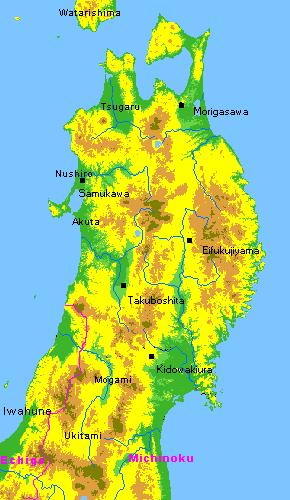The Epi-Jomon culture describes the continuing Jomon in northeastern Japan, and follows the end of the Latest Jomon in other areas of Japan. Scholars believe that there was an expansion south from Hokkaido and coincided with the movement north of the Kofun culture. It is now believed that the Epi-Jomon is a culture that originated with the Jomon people who still lived in the area of northern Tohoku and Hokkaido, and contrasted from the roughly contemporary Kofun culture which originated in the Kinai. Whereas the Kofun culture is identified with the proto-historic period of the Yamato Japanese, the Epi-Jomon episode is identified with the non-Japanese population, the ancestors of the Emishi and Ezo. We can speak of this migration as the northern expansion that took place between the third and fifth centuries A.D.. Here I will examine the evidence of this little known but very important migration that set the stage for the eventual clash of cultures that took place in the Tohoku when the Yamato state expanded into the area in the historical period.
The evidence is conclusive that the Epi-Jomon were directly ancestral to the Satsumon culture in Hokkaido, and very strongly related to the Emishi of northern Tohoku. It is based on pottery types, grave types and other physical remains such as stone scrapers. The following is a summary of this evidence divided into four categories: grave type, pottery culture, scrapers, and other physical remains (Kumagai 2004: 22-6). Epi-Jomon Sites

The grave sites of areas associated with Epi-Jomon shows the spread of dokobo, a type of grave characterized by a circular hole where bodies were interred. This type of grave is characteristic of Hokkaido and the following sites in the Tohoku: from the third to fourth centuries AD, the Samu-kawa site near Noshiro in Aomori prefecture, and the Eifukuji-yama site near Morioka; from the fifth to sixth centuries AD, the Mori-ga-sawa site in Aomori prefecture, and two sites from Miyagi prefecture, the Kido-waki-ura site and the Takuboshita site. The similarities between these sites suggest that this type of grave spread from north to south and reached its presently known southern extent in northern Miyagi prefecture. The fact that these grave sites are of the same type as found in Hokkaido earlier suggests that they spread from there to northern Tohoku.
